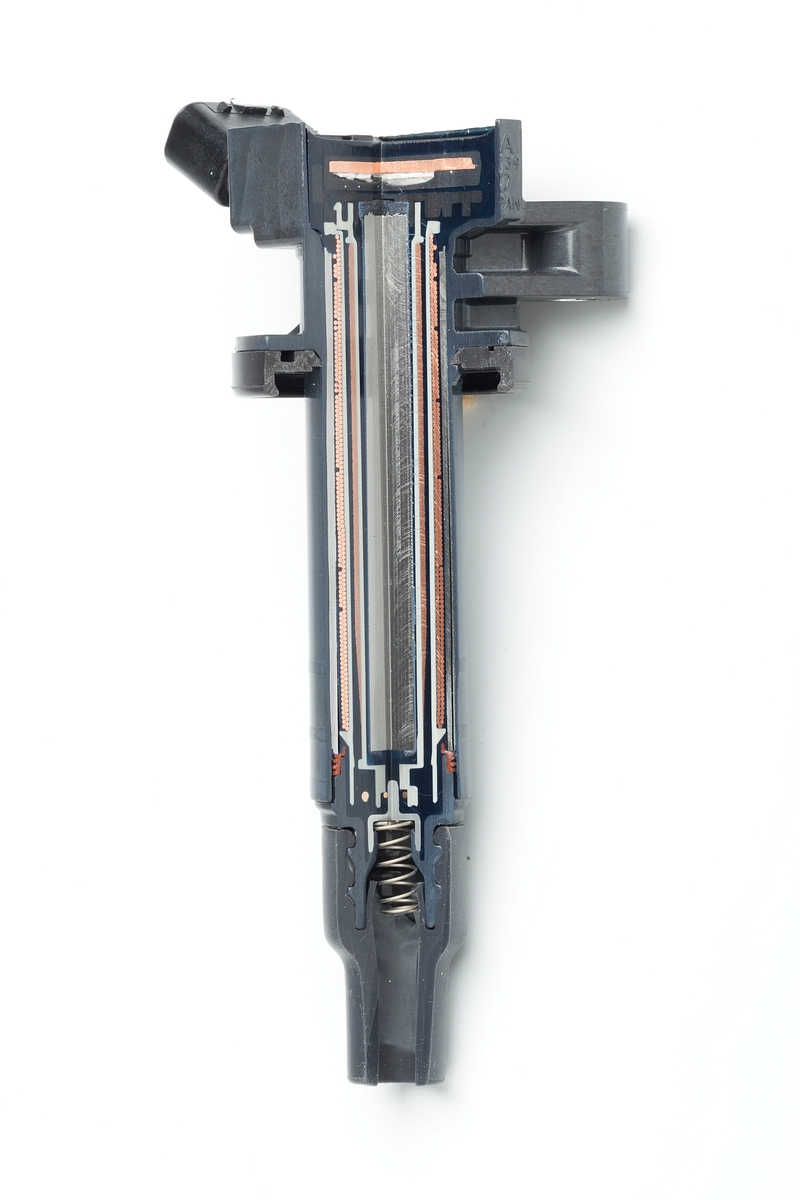DENSO aftermarket focus – ‘stick’ type ignition coils
Although the quality of original equipment (OE) coils is very high, in common with many automotive components, over time they do deteriorate and must be replaced, but workshops fitting anything other than an OE quality replacement would be short-sighted due to the important role they play, as without a fully functioning coil, the engine would simply not perform correctly.
However, two key characteristics of the ignition coil that are rarely seen in other automotive parts, also affect their lifespan and their subsequent replacement. The first is that they generate very high voltages of between 10 and 40 kilovolts, and second, they are held together in a hardened epoxy resin case, which not only secures their internal components, but insulates them from the high voltage the coil produces.
When fitted to the engine, ignition coils are not only exposed to both high and low temperatures, but also thermal expansion. However, the elements they are composed of – predominantly resin and metal – are firmly fixed with epoxy, but possess different thermal expansion coefficients. Therefore, being subject to differing temperatures, the various coefficients of thermal expansion, in conjunction with the epoxy clamp overlap, means there is no escape for the high thermal stress. If this thermal stress increases, the epoxy may crack, resulting in a break in the copper wire, or a leakage of high voltage that reduces the voltage supplied to the spark plug, leading to engine failure. These problems are unique to ignition coils. So, to address them ignition coils generally use rubber or other ‘cushioning’ material to reduce thermal stress.
Stick Ignition Coils
In contrast to other ignition coils, stick coils are characterised by the fact that their main components are housed within the engine’s spark plug holes, an elongated cylindrical space, with a diameter of approximately 22-24mm and a depth of around 100-150mm.
As many parts, such as the plastic outer core of the case, the primary winding and primary spool, the secondary winding and secondary spool and the centre core, as well as the epoxy resin, need to be placed in such a confined space, high technical capabilities are required in their manufacture. Therefore, due to the limitations of the space available, DENSO stick coils also utilise a technique called diagonal winding for their secondary winding, which allows many more winds to be made in less space.

The Challenges
Being long and narrow, the thermal stress in the axial direction of a stick coil body, caused by the heat shock environment it is exposed to, tends to be particularly high, so DENSO uses cushioning material for the top and bottom ends of the centre core to alleviate this problem. This material, which includes rubber, is subject to DENSO’s FEM analysis and therefore conforms to the appropriate physical properties and dimensions, a factor lacking in many inferior alternatives. In addition, although some ignition coils from other companies now have diagonal secondary winding, the winding technology incorporated is often low, which also affects their durability.
In order to produce a high-performance ignition coil, it is necessary for the design, production and quality controls in their manufacture to be at a high level, because the challenge is for them to maintain their performance for a prolonged period. So, despite the fact the difference in performance (output voltage, energy etc.) between a new DENSO ignition coil and one from a competitor may sometimes initially be small, over its lifetime the difference becomes apparent, as age deterioration of their performance affects their reliability and service life.
Don’t be Fooled By Appearances
Although by imitating its appearance and the internal structure, at first glance one ignition coil may look like another, the physical properties of the materials it incorporates have a significant impact. So, as a major OE manufacturer of coils for VMs worldwide, DENSO is constantly examining the materials, properties, dimensions and requirements, to design and manufacture its ignition coils using the most suitable contents to provide the highest quality, long-term solution for OE and aftermarket alike.
Further details of the DENSO aftermarket program are available online at: www.denso-am.eu




















































